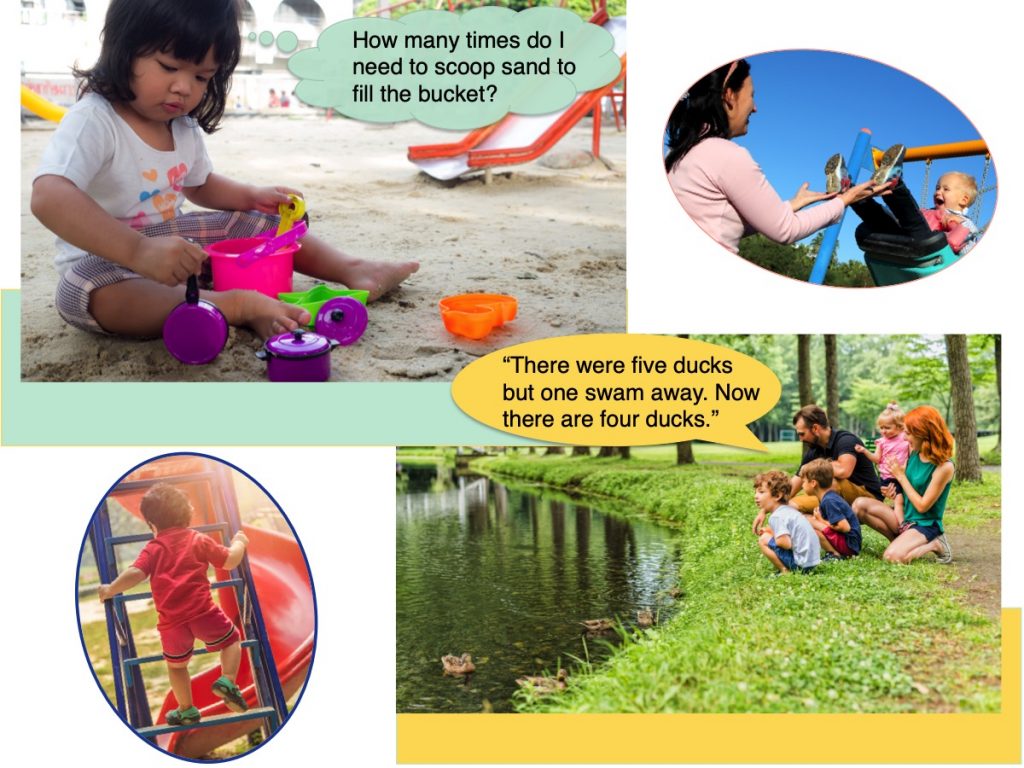
Playing with math can happen anytime and anywhere – from your home, to the grocery store, to the park. For example, the playground is a great place for children to engage in math learning. Children learn about math concepts when adults talk about how children cross over a bridge or who is swinging the highest. Playing with filling and dumping sand in the sandbox teaches children about measurement. Which cup holds more? How many times do I need to scoop sand to fill the bucket? As a toddler climbs the steps to the slide, he is learning about height and direction. These are early spatial skills. The more steps a child climbs (a number concept), the higher they go (a spatial concept). Spatial skills help children understand math by showing them that greater space often means a larger number. These skills are important for everything from arithmetic to mental calculations to calculus.
Adults can use playful math language to further support children’s learning at the park or on the stoop. Help children find shapes on the playground or on the steps. Describe how the monkey bars form a rectangle. Introduce spatial concepts like up, down, near, or far. “Come down the slide!” Or ask, “How many steps are there?” Expose children to addition and subtraction during playful everyday activities with objects. “There were five ducks but one swam away. Now there are four ducks.” Ask children to compare whether it takes more time to walk or run between two trees. We can find math in just about everything we do!
-
- Free play
- is spontaneous, unstructured play that is child-directed
- Guided play
- is like free play, in that it's focused on what the child is interested in. But unlike free play, an adult facilitates a playful learning experience